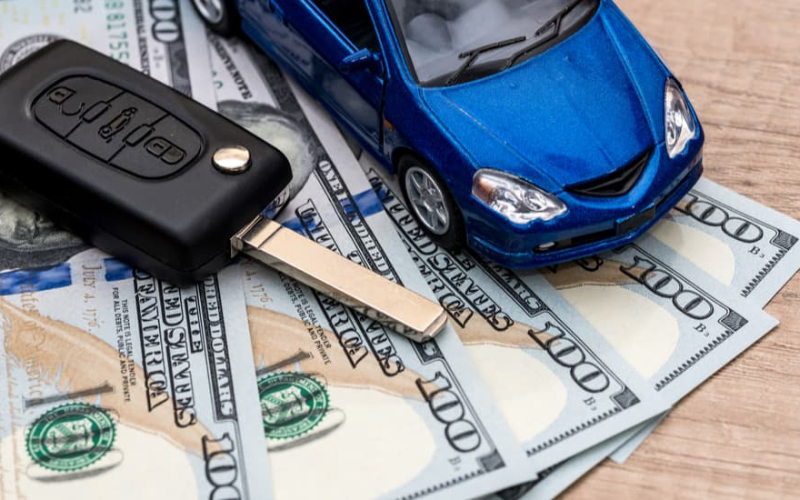Selling a vehicle or a trailer may seem like a challenging task, even for skilled sellers. This guide, however, is aimed at transforming this potentially complex mission into a fulfilling journey. It provides you with the confidence and know-how needed to navigate the sale process smoothly. Get ready for an enriching exploration that uncovers each critical step towards executing a transaction that meets your objectives and ensures a pleasant experience for your buyer.
Know Your Vehicle Inside Out
The first step to a successful sales venture is gaining a thorough understanding of its key features and specifications. Be conversant with the vehicle’s model, make, year, mileage, condition, and other essential details. Understand the vehicle’s history, maintenance records, and any existing warranties. Your depth of knowledge about the vehicle can instill confidence in your buyers and lay a solid foundation for your sales efforts.
Set the Right Price
Accurately pricing your object is an art that balances attracting potential buyers and retaining a fair profit margin. To start, familiarize yourself with the current market value for vehicles similar to yours. You can do this by scanning local listings and utilizing online appraisal tools that offer insights into the recent sale prices for comparable car models. Remember to adjust for varying conditions, trim levels, and mileage.
Next, consider the following pricing strategies:
- Cost-based pricing: While this might not directly apply to selling used vehicles, understanding the amount you have invested in your vehicle, such as maintenance and upgrades, can help you establish a pricing baseline.
- Competition-based pricing: Look at how similar vehicles in your area are priced. Be careful to consider factors like model year, mileage, vehicle condition, and additional features. Price your vehicle competitively, offering a deal that gives you an edge over other sellers.
- Demand-based pricing: If you have a popular model that is in high demand, you might be able to price your vehicle a bit higher. Researching market trends will help you recognize if your car is a hot commodity.
- Value-based pricing: This focuses on the perceived worth of your vehicle to the buyer. For instance, a well-maintained vehicle with a detailed service history, new tires, and upgrades may command a higher price.
While setting the price, always factor in a margin for negotiation. Most buyers expect to negotiate on the price, so if you price your car slightly higher, you can lower it a bit during negotiations and still reach your target sale price. However, avoid pricing it too high as it may drive potential buyers away.Â
Lastly, revisit your price point if the vehicle isn’t selling. The market may be signaling that the car is overpriced. Remember, the ultimate objective is to find the perfect balance where the vehicle price matches its perceived value to the buyer.
Draft a Sales Plan
In crafting your sales strategy, researching market trends and audience behavior becomes invaluable. Identify your ideal buyer persona, their preferences, and how your vehicle fits into their needs. Decide on marketing channels that resonate with your target audience, be it online listings, social media, or print media. Remember, selling a vehicle goes beyond just exchanging goods for money; it’s about addressing customers’ needs and building relationships.
Marketing and Promotion
Securing visibility is an integral part of the vehicle sales process as it sets the stage for your offering. Capitalize on various online and offline marketing avenues to display and demonstrate the allure of your vehicle or trailer. When utilizing digital platforms, remember that a picture speaks a thousand words. Ensure each photograph is detailed, capturing the vehicle from various angles and showcasing its prime features. Alongside these images, craft an engaging and informative description that paints a clear picture of what potential buyers can expect. Highlight the item’s unique selling points to distinguish it from competing listings and appeal to the buyer’s needs or wants.
Meanwhile, don’t underestimate the influential power of traditional marketing avenues. Good old-fashioned word-of-mouth publicity can generate a buzz among local circles and effectively reach specific demographics that online platforms may miss. Similarly, advertising in local print media like newspapers or bulletins can tap into a market that prefers established, conventional information sources. Combining these various marketing tactics not only enhances visibility but also maximizes your reach, penetrating different segments of the buyer population.
Cultivating Customer Relationships
The successful sale of a vehicle doesn’t rely solely on the vehicle’s attributes but also on the relationship you cultivate with potential buyers. Be transparent in your dealings, address their queries promptly, and provide as much information as possible. This approach can help build trust, making you their preferred choice.
Manage the Transaction
When a buyer expresses interest in your vehicle, it’s essential to have all requisite documents within reach. Let’s imagine you’re going to sell a trailer. It means you should prepare the trailer’s title documents — a legal certificate of ownership, service records that exhibit the trailer’s maintenance history, anda bill of sale for trailer, a legal document evidencing the transfer of ownership from you to the new owner. The importance of accurate documentation cannot be overstated, as it not only expedites the sales process but also lends credibility to you as a seller and certifies the trailer’s authenticity.
Using a professionally-drafted bill of sale template can be very advantageous. This ready-to-use format ensures you have a comprehensive, legally compliant document that encapsulates all necessary information: the object’s description, purchase price, seller and buyer’s details, and a statement of disclosure about the object’s condition. Importantly, once signed and dated, this bill of sale serves as a critical record of the sale, offering legal protection in case of future disputes or discrepancies.
Close the Sale
The closing phase involves final discussions on price, warranties, and future services. Be prepared to negotiate and assure the buyer about the quality and condition of the vehicle. Providing a positive purchasing experience can win you referrals and possible future transactions.
Conclusion
Selling a vehicle requires precise planning and a customer-focused approach. Knowing your vehicle, setting the right price, planning your sales strategy, marketing your vehicle visibility, building relationships, managing documents, and successful negotiation are integral elements for a smooth transaction. As you undertake this journey, remember that you are not only selling a vehicle or a trailer, but you’re also providing a solution to a buyer’s transportation needs.




